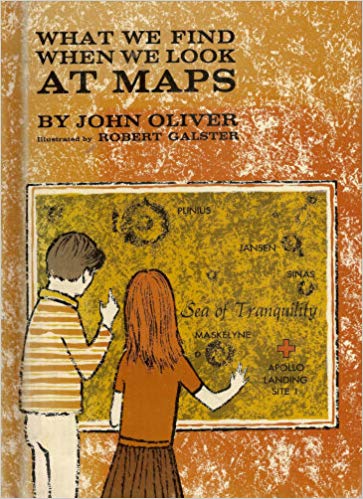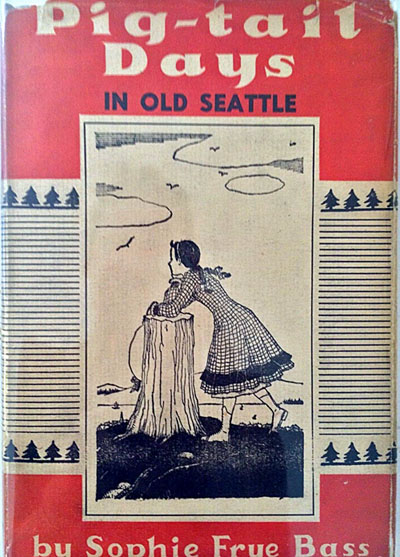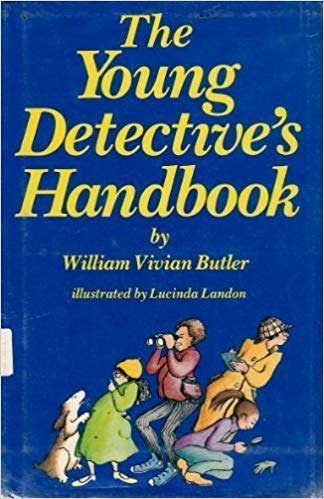I’ve been fascinated by streets, signs, maps, and addresses since I was very young. As I look back, I can identify three books that set me upon the path to becoming a certifiable “address nerd.”

1. My parents bought me John Oliver and Robert Galster’s What We Find When We Look at Maps toward the end of the 1970s. I had apparently shown great interest in street signs and maps as a preschooler: I would make my own paper signs for the hallways at home and hang them on the door frames with Scotch tape, and I would draw my own maps — sometimes of my own neighborhood, sometimes of imagined locations. Even though it’s almost a half-century old and so of course has nothing at all about electronic maps, I’d still recommend What We Find When We Look at Maps to the parents of any budding cartographer.

2. Sophie Frye Bass, the author of Pig-Tail Days in Old Seattle, was born here in 1867. Her parents were George and Louisa (Denny) Frye. Louisa’s parents were the settlers Arthur A. and Mary Ann (Boren) Denny, who, as part of the Denny Party, are credited with founding Seattle in 1851. Toward the end of Bass’s life, she wrote this recollection of her early days. What fascinated me most about it was that she used the city’s streets as a jumping-off point to tell the stories of her childhood:
In the years that have followed [Pike Street] has had its ups and downs…. We, who grew up in the street, love it. There were many happy days spent there — some sorrowful ones too, but still we love it. When we drive about, we try to visualize the blazed trail, the stumps, the johnny-jump-ups and the best wild blackberry patch that ever grew.
Bass would also provide the etymology of each street’s name she mentioned. For example, she informs us that Pike Street was named for John Henry Pike, “who helped build our old University building,” and that Spring Street was named for “Tzee-tzee-lal-litch — where springs of clear water bubbled from the earth and the beach was sandy and free from rocks, there the Indians camped.”
Dad bought me Pig-Tail Days in Old Seattle at the old Museum of History & Industry (MOHAI) gift shop in Montlake when I was around 6.

3. The last one I’ll mention is William Vivian Butler’s The Young Detective’s Handbook, which my sister gave me for my 7th birthday. As the title implies, it’s a guide for young folk who want to play at being detectives (and, along the way, gain observational skills that might actually help them later in life).
One of the questions — #86, to be exact — in the “Exercise Eye-Opener” chapter was this: “A police car, in pursuit of a gang of thieves driving a fast Jaguar, roars past your house in a westerly direction, and the chase goes on for half a mile. Where would it wind up?” The problem with this for me was that this would have been physically impossible. My street was ²/₁₀ of a mile long and my house was just about at the midpoint.
However, at its western end my street became a stairway. My father informed me that the street right-of-way continued down the hill, and later my curiosity led me to discover that it was really ⁴/₁₀ of a mile long — half of that either as stairway or unimproved right-of-way. Still not half a mile, but close! And since, in Seattle, street names are used for discontinuous segments, one could make a fair argument that the street was really 4 miles long, from Lake Washington in the east almost all the way to Elliott Bay in the west. So began my realization that a street wasn’t just a stretch of paved road.
Born and raised in Seattle, Benjamin Donguk Lukoff had his interest in local history kindled at the age of six, when his father bought him settler granddaughter Sophie Frye Bass’s Pig-Tail Days in Old Seattle at the gift shop of the Museum of History and Industry. He studied English, Russian, and linguistics at the University of Washington, and went on to earn his master’s in English linguistics from University College London. His book of rephotography, Seattle Then and Now, was published in 2010. An updated version came out in 2015.
